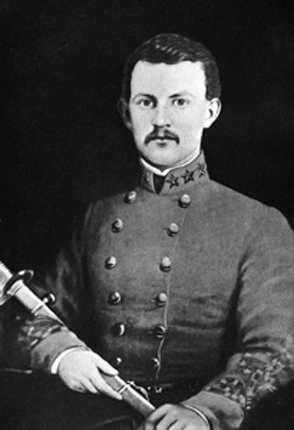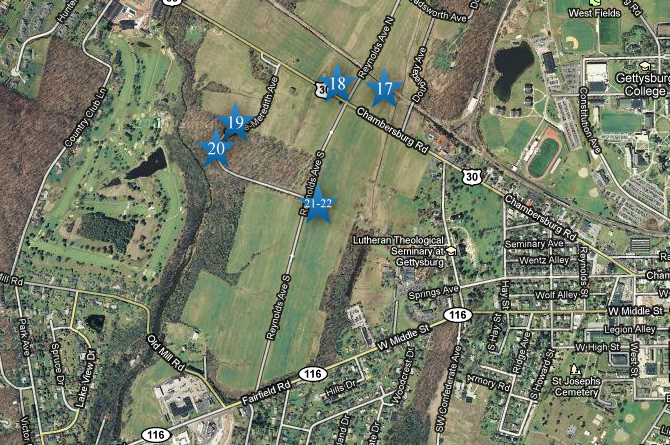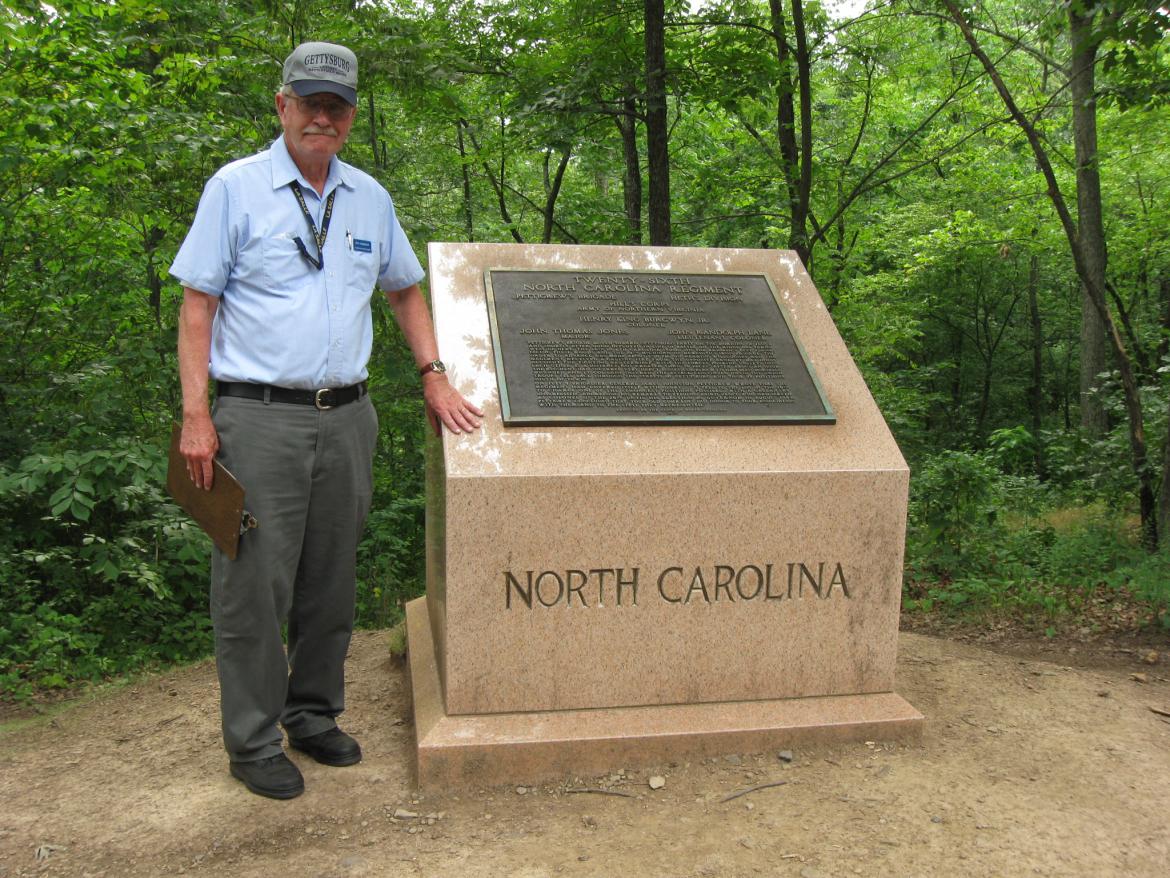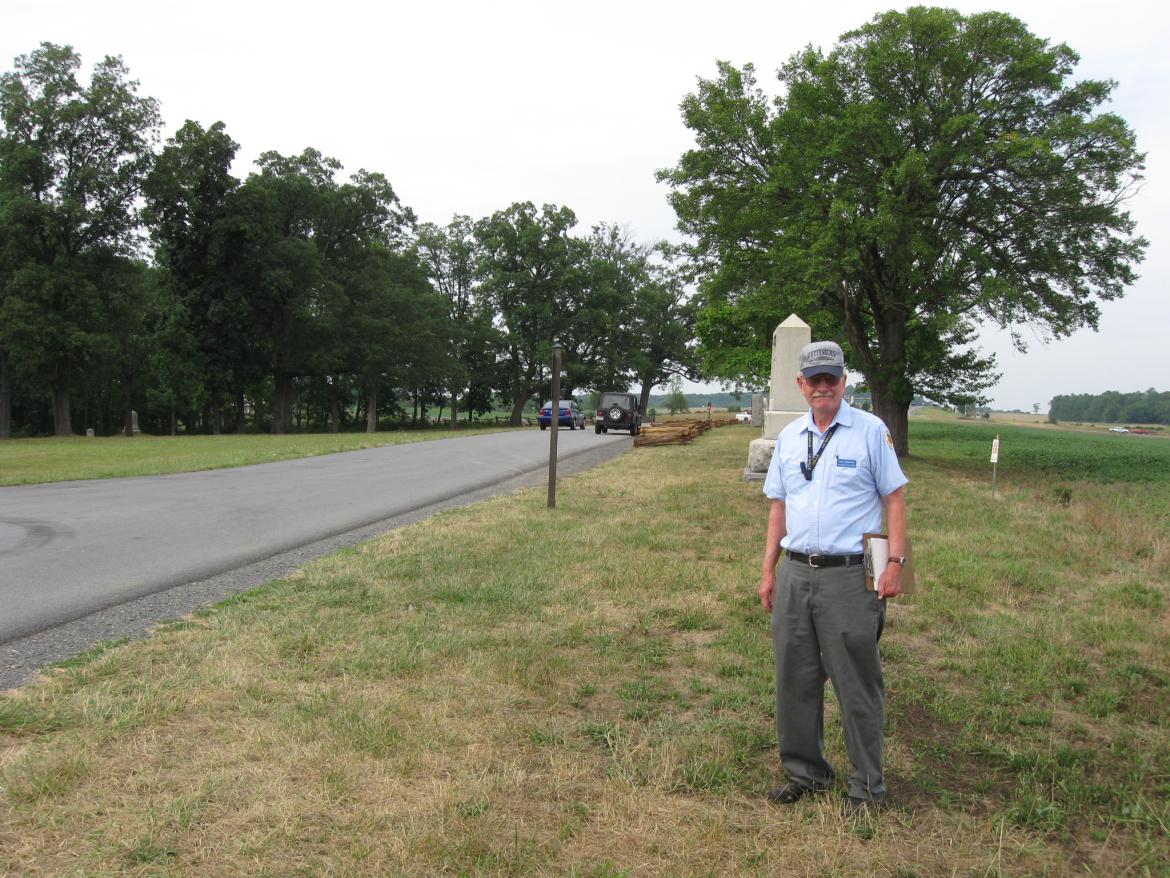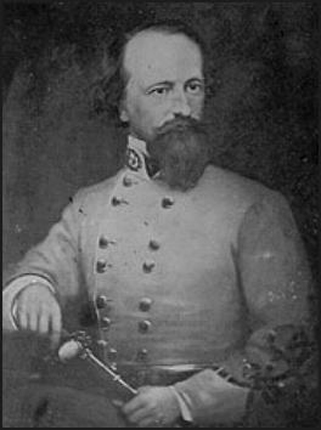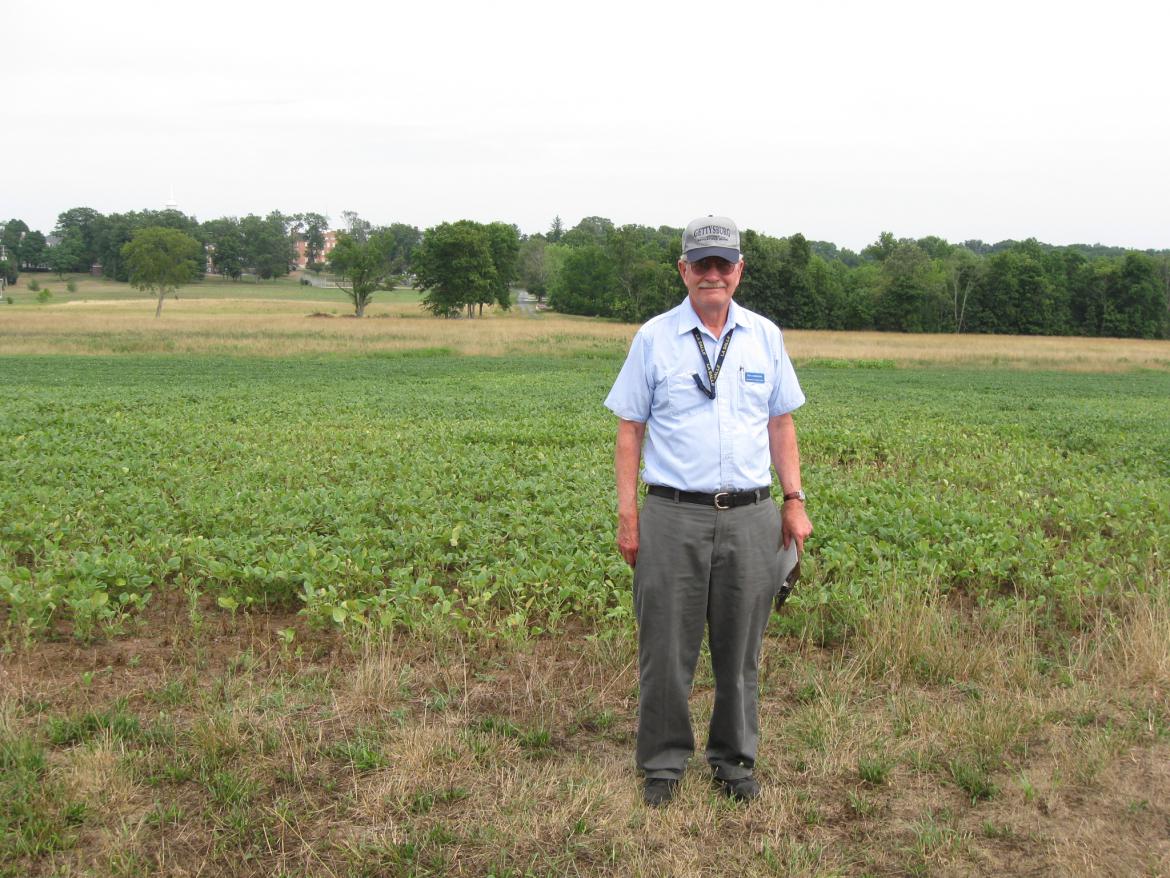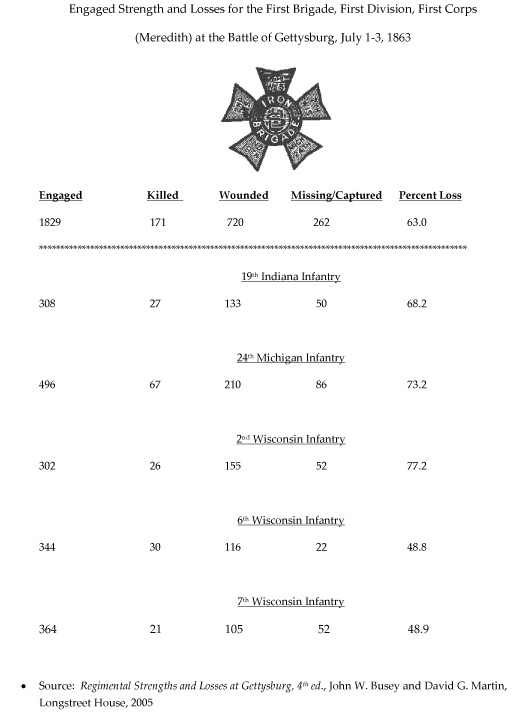Colonel Henry King Burgwyn Jr. (1841-1863) of the 26th North Carolina Infantry Regiment was actually born in Jamaica Plain, Massachusetts where his parents were vacationing. He graduated from the University of North Carolina in 1857 and from the Virginia Military Institute in 1861. One of his VMI professors, Thomas Jonathan (later “Stonewall”) Jackson recommended Burgwyn’s appointment as an officer in the Confederate army. When the 26th North Carolina regiment joined the Army of Northern Virginia in in May, 1863, Burgwyn was thought to be the youngest Colonel in the army. He also commanded the largest Confederate regiment, as the 26th North Carolina brought over 800 soldiers to the Gettysburg battlefield. On July 1, 1863, Burgwyn was near the crest of West McPherson’s Ridge when he was shot through both lungs and his abdomen. He died approximately two hours after he was wounded, and was buried north of the Chambersburg Pike in “an empty gun case.” His family had his body exhumed in 1867, and he is now buried in Raleigh, North Carolina’s Oakwood Cemetery. This image is courtesy of Richard Goedkoop.
In today’s Iron Brigade post, Licensed Battlefield Guide Richard Goedkoop shows the retreat of the Iron Brigade on the afternoon of July 1, 1863, from McPherson’s Woods to Seminary Ridge.
This map shows the location of the videos for Iron Brigade posts. Videos #1-#16 were shown in our previous Iron Brigade posts. Video #17 was taken at the Railroad Cut Video #18 was taken on east McPherson’s Ridge. Video #19 was taken by the monument to the 7th Wisconsin Regiment. Video #20 was taken by the monument to the 26th North Carolina Infantry Regiment. Videos #21 and #22 were taken on East McPherson’s Ridge near the junction of Reynolds Avenue and Meredith Avenue. This map was created facing north at approximately 3:00 PM on Saturday, November 20, 2010.
Gettysburg Licensed Battlefield Guide Rich Goedkoop is the host for the Iron Brigade series. He is standing in McPherson’s Woods near the monument to the 26th North Carolina Infantry Regiment. This view was taken facing northwest at approximately 5:15 PM on Saturday, July 17, 2010.
In Video #20 (Videos #s 1-19 were shown in our previous Iron Brigade posts) Gettysburg Licensed Battlefield Guide Rich Goedkoop is standing near Meredith Avenue and the monument to the 26th North Carolina Infantry Regiment. He explains how the Iron Brigade was driven out of McPherson’s/Herbst’s/Reynolds’ Woods on the afternoon of July 1, 1863. This view was taken facing northwest to north to northwest to north at approximately 5:15 PM on Saturday, July 17, 2010.
Licensed Battlefield Guide Richard Goedkoop is standing on East McPherson’s Ridge. McPherson’s/Herbst’s/Reynolds’ Woods are in the left background. Shown at the edge of the woods in the left background is the small right flank marker for the 151st Pennsylvania Infantry Regiment. The larger marker, partially hidden by a tree memorializes the area where United States’ Major General John F. Reynolds was killed. The dark blue jeep and the lighter blue car are on Reynolds Avenue. Meredith Avenue forms a junction with Reynolds Avenue on the left. The white and red car in the right background are on the Chambersburg Pike. The woods above the white and red car are Sheads’ Woods on Oak Ridge. The monument behind Dr. Goedkoop is to the 8th New York Cavalry Regiment. This view was taken facing northwest at approximately 5:15 PM on Saturday, July 17, 2010.
In Video #21 Licensed Battlefield Guide Rich Goedkoop is standing on East McPherson’s Ridge. He describes how Heth’s Division drove the Iron Brigade and other Union soldiers off this ridge on the afternoon of July 1, 1863. This view was taken facing northwest to southeast at approximately 5:15 PM on Saturday, July 17, 2010.
Brigadier General James Johnson Pettigrew (1828-1863) commanded his North Carolina Brigade and also Heth’s Division during the Gettysburg Campaign. He entered the University of North Carolina at the age of 15. He excelled in mathematics and was appointed by President James K. Polk as an assistant professor at the United States Naval Observatory. He studied law, traveled around Europe for seven years, and learned to speak and write French, German, Italian, and Spanish. He also learned how to read Greek Hebrew and Arabic. He spent time in the United States’ diplomatic service, and was a member of the South Carolina legislature. At the Battle of Seven Pines, Pettigrew was wounded by a minie ball that damaged his throat, windpipe, and shoulder. While lying wounded he received another bullet wound in his arm and was bayoneted in the right leg. At the Battle of Gettysburg he commanded a brigade of 2500 men. He commanded the division after the wounding of Major General Henry Heth on July 1, 1863. On July 3, 1863 during the Pickett-Pettigrew-Trimble Assault or Longstreet’s Assault or Pickett’s Charge, Pettigrew’s horse was shot from under him and he continued on foot. He was severely wounded in the left hand by a canister ball when approximately 100 yards from the stone wall on Cemetery Ridge. During the retreat from Gettysburg, on July 14, 1863, Pettigrew’s soldiers were attempting to defend the Confederate crossing across the Potomac River at Falling Waters. Pettigrew was wounded in the abdomen and died three days later. General Robert E. Lee remarked, “The army has lost a brave soldier and the Confederacy an accomplished officer.” This image is courtesy of Dr. Richard Goedkoop.
Dr. Richard Goedkoop is standing on East McPherson’s Ridge. Seminary Ridge is in the background. The red brick Seminary Building is visible through the trees in the left background. This view was taken facing southeast at approximately 5:15 PM on Saturday, July 17, 2010.
In Video #21 Rich Goedkoop describes how Pender’s Confederate division arrived on the field and assisted in driving the Iron Brigade towards Seminary Ridge. This view was taken facing north to northeast to southeast approximately 5:15 PM on Saturday, July 17, 2010.
Some statistics from the Iron Brigade’s action at Gettysburg.

